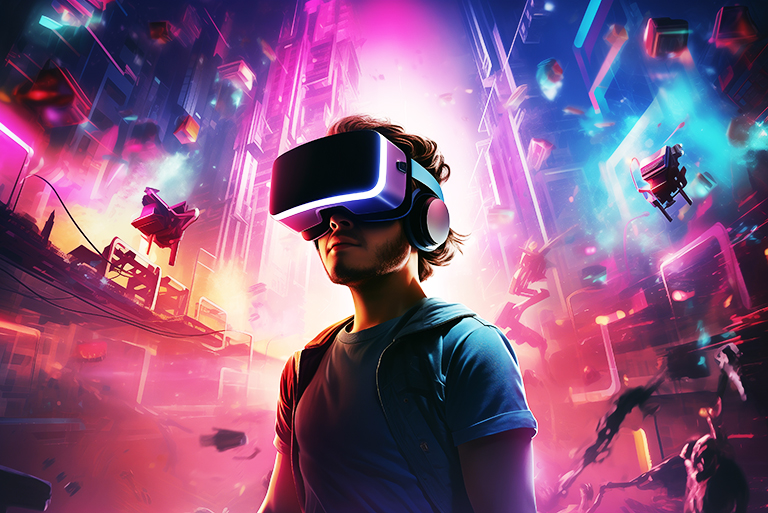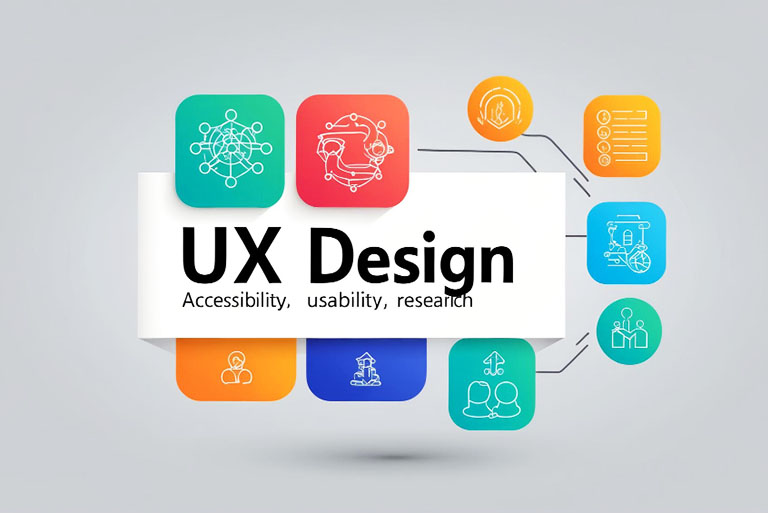Introduction
Imagine walking into a fully immersive digital world where everything responds to your voice, gestures, and thoughts. That’s not science fiction — it’s the new reality powered by Artificial Intelligence (AI) in the Metaverse.
Pain Point:
Yet, for most businesses, bridging the gap between physical and virtual engagement remains an expensive, complex, and uncertain venture. They face questions like: How can we deliver realistic customer experiences in VR? How do we make our digital environments feel “human”? And more importantly — where do we begin?
Solution Overview:
At Uxgen Technologies, we don’t just keep up with emerging trends — we set them. From advanced AI models to human-centric design strategies, our expert solutions merge innovation with user psychology to create seamless, emotionally resonant virtual experiences.
This CTA Set reader expectations and invite early engagement.
CTA:
In this blog, you’ll discover how AI is the silent engine behind the Metaverse and VR evolution, and how companies like yours can take full advantage with help from Uxgen Technologies and its powerhouse subsidiaries: Uxgen Design Studio, Uxgen Academy, and Uxgen Marketing.
Section 1: Understanding the Problem
The Big Picture
As of 2024, the global Metaverse market size stands at $83.9 billion and is expected to surpass $1.5 trillion by 2030 (Statista). However, nearly 72% of businesses still lack a clear roadmap to enter or scale in this space.
The User Disconnect
Most virtual experiences are clunky, impersonal, and lacking context. In VR environments, poorly trained AI leads to robotic avatars, disjointed speech, and generic interactions — breaking immersion and damaging brand credibility. For students and learners, the absence of adaptive AI results in flat learning curves and disengagement.
Business Impact
Companies investing in virtual spaces without personalized AI see lower engagement rates and up to 40% lower ROI compared to those using AI-powered systems. The Metaverse isn’t just visual — it’s behavioral, emotional, and contextual. And that’s where AI becomes indispensable.
Section 2: Solution & Insights
AI as the Brain of the Metaverse
Artificial Intelligence powers the Metaverse like a nervous system powers the body. It enhances user interaction through:
-
Natural Language Processing (NLP): Enabling real-time conversations with avatars.
-
Computer Vision: Recognizing gestures, facial expressions, and user behavior.
-
Reinforcement Learning: Adapting environments based on user preferences.
-
Personalized AI Agents: Building unique, responsive avatars that evolve with user behavior.
UX and Design Synergy
With over 20+ years of expertise in design and digital transformation, Uxgen Technologies bridges technology with human emotion. We use AI not as a tool, but as a co-designer — shaping 3D experiences rooted in neuro-design, behavioral science, and CRO strategies that increase engagement by up to 67%.
Latest Trends Shaping the Space:
-
AI-Driven Virtual Economy: Avatars that buy, trade, and sell with AI logic.
-
Emotionally Intelligent Interfaces: Detecting emotional states and adjusting content in real time.
-
Smart Learning in Virtual Classrooms: AI tutors adapting lessons in the Metaverse based on student performance.
Section 3: Case Studies & Examples
Case Study 1: Retail Experience Reimagined
Client: A global fashion brand (hypothetical)
Before Uxgen: A basic VR showroom with static models and pre-programmed responses.
After Uxgen: AI-powered shopping assistants, gesture-based try-on simulations, real-time avatar interactions. Result: 47% increase in session time, 38% uplift in conversions.
Case Study 2: Learning in the Metaverse
Client: Uxgen Academy
Launched a fully immersive virtual campus where AI adapts lessons based on student behavior. Real-time feedback, gamification, and intelligent tutoring systems led to 3x higher retention rates and student satisfaction at 94%.
Case Study 3: Uxgen Marketing’s Campaign for a Tech Product
Integrated AI avatars into a VR product demo that responded dynamically to customer queries. Personalized experiences boosted demo engagement by 60%, while data insights informed future campaigns with pinpoint accuracy.
Section 4: Actionable Takeaways
Here’s how you can begin leveraging AI in the Metaverse and VR today:
-
Start Small, Scale Fast: Begin with one AI-powered feature — like voice-enabled navigation — and evolve.
-
Focus on Emotional Design: Use user research and behavioral metrics to shape AI interactions.
-
Integrate Real-Time Feedback Loops: Ensure your AI system learns and adapts continuously.
-
Use Modular Design: Build scalable systems that adapt to new technologies.
-
Collaborate with Experts: Partner with UX and AI professionals to accelerate success.
For Students & Learners:
-
Learn the fundamentals of AI and its VR applications via Uxgen Academy.
-
Experiment with open-source tools like TensorFlow, Unity ML-Agents, and more.
-
Build a simple VR project integrating AI to understand core principles practically.
This CTA Encourage readers to take action once they’ve learned tangible steps.
Section 5: How Uxgen Technologies Can Help You
Why partner with us? Because we deliver results, not just buzzwords.
-
AI Strategy Consulting: Crafting custom AI roadmaps tailored to your business goals.
-
Experience Design with CRO Focus: Human-first design backed by conversion science.
-
Modular Metaverse Development: Scalable, flexible VR environments powered by smart AI.
-
Learning Solutions via Uxgen Academy: Upskilling teams and learners in AI-UX principles.
-
Digital Marketing Integration: Leveraging Uxgen Marketing to launch AI-powered campaigns with data-backed storytelling.
Whether you’re launching a product, training your workforce, or educating the next generation — Uxgen Technologies provides the strategic foundation and execution muscle to succeed in the evolving virtual world.
Conclusion & CTA
The Metaverse is not just a digital playground — it’s the next evolution of the internet. And AI is what brings it to life.
From immersive learning and smart avatars to adaptive experiences and emotional intelligence — AI is the magic wand behind every impactful virtual interaction. But like any powerful tool, it needs expert guidance.
Ready to shape your future in the AI-driven Metaverse?
Let’s start a conversation. Reach out to Uxgen Technologies to unlock the full potential of AI, design, and the virtual frontier.
Explore our specialized services through:
Together, let’s build intelligent, beautiful, and result-driven virtual worlds.
This CTA Final push for conversion and engagement.
FAQ Section
Q1: How does AI improve virtual reality?
AI enhances VR by making environments interactive, personalized, and adaptive through technologies like NLP, computer vision, and real-time learning algorithms.
Q2: Can small businesses afford AI integration in the Metaverse?
Absolutely. With modular solutions and phased implementation from Uxgen Technologies, small to medium-sized businesses can begin with cost-effective strategies and scale as needed.
Q3: What industries benefit most from AI in the Metaverse?
Retail, education, healthcare, real estate, and entertainment are currently seeing the most impact, but almost any industry can benefit with the right strategy.
Q4: How can I learn to build AI-powered virtual experiences?
Check out Uxgen Academy for hands-on training in AI, UX design, and Metaverse development designed for students, professionals, and entrepreneurs.
Q5: What makes Uxgen Technologies different?
We combine deep AI expertise with human-first design thinking, backed by decades of CRO, UX, and digital growth experience — making us a one-stop powerhouse for your virtual evolution.








